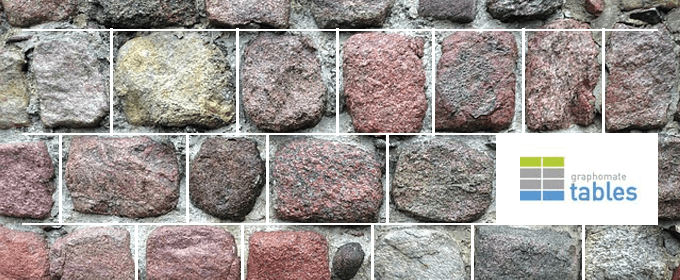“No one has the intention to build a table…”

Finally: After the graphomate charts I am looking forward to present our next add-on for Design Studio: the graphomate tables.
Yet another table component for Design Studio? Yes: From an analytical perspective, the standard crosstab does offer everything your heart desires. However, for use in a dashboard they can not convince me …
If I were asked which visualization element is ubiquitous in reporting/BI environment, my answer would be clear: the (data) table. Wait… the table is a visualization element? Of course! Just like charts, graphs or photos a table shows information. Few forms of visualization have such a high information density as the table: it shows many information in an efficient use of space. Well-structured and designed tables are a good way to present the detailed data to addressees and decision makers.
What sets our table component apart:
- very clear and easy to read appearance according to HICHERT®SUCCESS,
- use of of integrated in-cell deviation charts via mouse clicks,
- flexible exceptions/alerts (signaling),
- depiction of implicit or external hierarchies as hierarchical tree,
- drill-down/roll-up along the hierarchy,
- Filterbox for deep hierarchies.
Here you can see an example with deviation charts and exceptions that can be created with the help of our add-on with just a few clicks:
Tables are part of the reporting!
In my opinion tables are not suitable for getting a comprehensive overview of the company’s situation quickly. They must be read and often you lose yourself in the details of large tables. There is a risk that the most important things get lost in the shuffle.
A striking fact about human cognition is that we like to process quantitative information in graphic form.
Pinker, S.: “A theory of graph comprehension”; In R. Freedle (Ed.) Artificial intelligence and the future of testing, (pp. 73–126).
Hillsdale, NJ: Lawrence Erlbaum Associates, Inc., 1990.
Therefore, aggregated information in dashboards should be represented as charts in the first step, in order to identify patterns and correlations faster. For that our component graphomate charts is the first choice. In the next step only it is recommandable to navigate into the detailed information that are shown in tabular form. The navigation/interactivity can be easily implemented using the scripting language of Design Studio.
Would you like to test our graphomate tables add-on for Design Studio? Please give us your contact details and get a trial version.
In the next post, you will read about our second new component: the graphomate bullet graphs.
Let the summer come,
![]()
_
![]()
This file is licenced under the Creative Commons-Licence.
